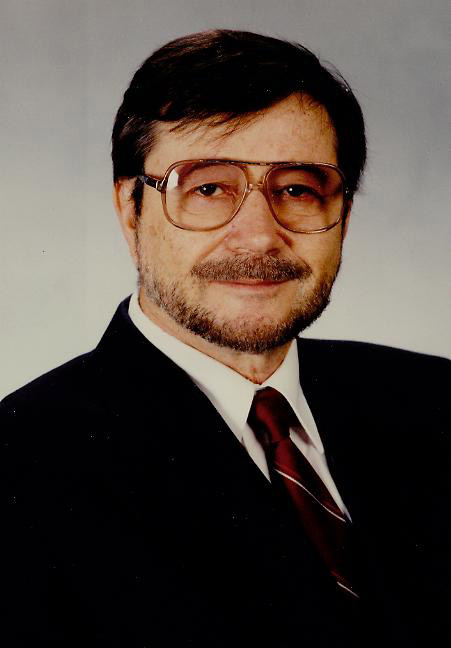|
FULL-SIZE SLIDES CAN BE VIEWED BY CLICKING ON THUMB-NAILS
ALTERNATIVELY, YOU CAN OPEN A NEW WEB BROWSER AND VIEW THE TEXT
AND SLIDES SIMULTANEOUSLY
WARNING - There are many graphics involved with the lecture pages
and may take time to load.
If a hard copy is preferred, please contact
kaoru@cs.ucla.edu

|
SLIDE 1: THE ART AND SCIENCE OF CAUSE AND EFFECT
OPENING STATEMENT
Thank you Chancellor Young, colleagues, and members of
the Senate Selection Committee for inviting me to deliver
the eighty-first lecture in the UCLA Faculty Research
Lectureship Program.
It is a great honor to be deemed worthy of this
podium, and to be given the opportunity to share my research
with such a diverse and distinguished audience.
The topic of this lecture is causality -
namely, our awareness of what causes what in the world
and why it matters.
Though it is basic to human thought, Causality is
a notion shrouded in mystery, controversy, and caution,
because scientists and philosophers have had difficulties
defining when one event TRULY CAUSES another.
We all understand that the rooster's crow does
not cause the sun to rise, but even this simple fact
cannot easily be translated into a mathematical equation.
|
Today, I would like to share with you a set of ideas which I
have found very useful in studying phenomena of this kind.
These ideas have led to practical tools that I hope
you will find useful on your next encounter
with a cause and effect.
And it is hard to imagine anyone here who is NOT dealing
with cause and effect.
Whether you are evaluating the impact
of bilingual education programs or running an experiment on
how mice distinguish food from danger
or speculating about why Julius Caesar crossed the Rubicon or
diagnosing a patient
or predicting who will win the 1996 presidential
election, you are dealing with a tangled web of cause-effect considerations.
The story that I am about to tell is aimed at helping
researchers deal with the complexities
of such considerations, and to clarify their meaning.

|
SLIDE 2: OUTLINE
This lecture is divided into three parts.
I begin with a brief
historical sketch of the difficulties that various disciplines
have had with causation.
Next I outline the ideas
that reduce or eliminate several of these historical
difficulties.
Finally, in honor of my
engineering background, I will show how
these ideas lead to simple practical tools,
which will be demonstrated in the areas of
statistics and social science.
|
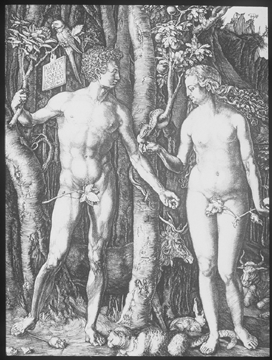
|
SLIDE 3: ADAM AND EVE (DURER)
In the beginning, as far as we can tell,
causality was not problematic.
The urge to ask WHY and the
capacity to find causal
explanations came very early in human development.
The bible, for example, tells us that
just a few hours after tasting from the tree of knowledge,
Adam is already an expert in causal arguments.
When God asks: "Did you eat from that tree?"
This is what Adam replies:
"The woman whom you gave to be with me,
She handed me the fruit from the tree;
and I ate."
Eve is just as skillful:
"The serpent deceived me, and I ate."
|
The thing to notice about this story is
that God did not ask for explanation, only for the facts:
It was Adam who felt the need to explain - the message is clear,
causal explanation is a man-made concept.
Another interesting point about the story: explanations
are used exclusively for passing responsibilities.
Indeed, for thousands of years explanations had no other
function. Therefore, only Gods, people
and animals could cause things to happen, not objects,
events or physical processes.
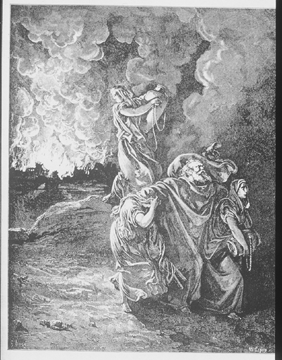
|
SLIDE 4: THE FLIGHT OF LOT (DORE)
Natural events entered into causal explanations
much later, because, in the ancient world, events
were simply PREDETERMINED.
Storms and earthquakes were CONTROLLED by the angry gods,
and could not, in themselves, assume causal
responsibility for the consequences.
|
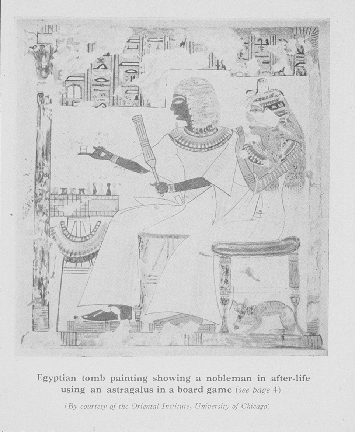
|
SLIDE 5: BOARD GAME (EGYPTIAN TOMB)
Even an erratic and unpredictable event such as the
roll of a die was not considered CHANCE event but
rather a divine message demanding proper interpretation.
|
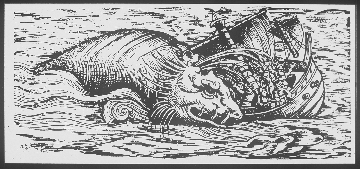
|
SLIDE 6: ON BOATS AND WHALES
One such message gave the prophet Jonah the scare of his life
when he was identified as God's renegade and was thrown OVERBOARD.
Quoting from the book of Jonah:
"And the sailors said: `Come and let us cast lots to find out
who is to blame for this ordeal.' So they cast lots and the lot fell on Jonah."
Obviously, on this luxury Phoenician cruiser, "casting Lots" were
not used for recreation, but for communication - a one-way
modem for processing messages of vital importance.
In summary, the agents of causal forces
in the ancient world were either deities, who cause things
to happen for a purpose, or human beings and animals,
who possess free will, for which they
are punished and rewarded.
|
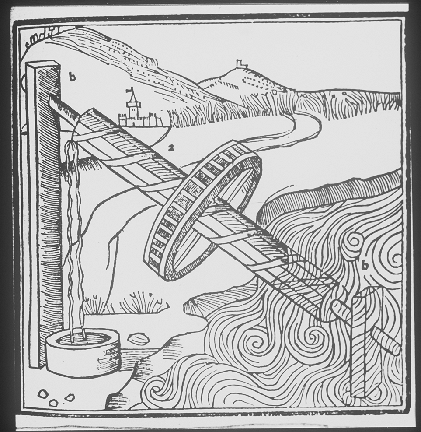
|
SLIDE 7: ARCHIMEDES' SCREW PUMP (VITRUVIUS, 1511)
This notion of causation was naive, but clear and unproblematic.
The problems began, as usual, with engineering; when machines
had to be constructed to do useful jobs.
|
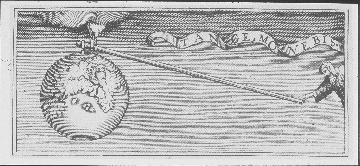
|
SLIDE 8: "... AND I WILL MOVE THE EARTH" (VAVIGNON, 1687)
As engineers grew ambitious, they decided that the
earth, too, can be moved, but not with a single lever.
|
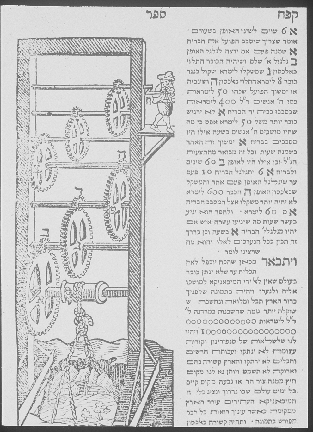
|
SLIDE 9: EARTH MOVING MACHINE (DELMEDIGO, 1629)
Systems consisting of many
pulleys and wheels, one driving another, were needed
for projects of such magnitude.
And, once people started building multi-stage systems,
an interesting thing happened to causality - PHYSICAL
OBJECTS BEGAN ACQUIRING CAUSAL CHARACTER\.
When a system like that broke down, it was futile
to blame God or the operator - instead,
a broken rope or a rusty pulley were more
useful explanations, simply because those
could be replaced easily, and make the system work.
At that point in history, Gods and humans
ceased to be the sole agents of causal
forces - lifeless objects and processes
became partners in responsibility.
A wheel turned and stopped BECAUSE the wheel
proceeding it turned
and stopped - the human operator became secondary.
|
Not surprisingly, these new agents of causation TOOK ON
some of the characteristics of their predecessors -
Gods and humans.
Natural objects became not only
carriers of credit and blame, but also carriers of
force, will, and even purpose.
Aristotle regarded explanation in terms of a PURPOSE
to be the only complete and satisfactory explanation for why a
thing is what it is. He even called it a "FINAL CAUSE",
namely, the final aim of scientific inquiry.
From that point on, causality served a dual role:
CAUSES were the targets of credit and blame on one
hand, and the carriers of physical flow of control on the other.
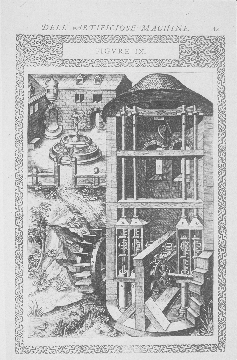
|
SLIDE 10: WATER-MILL
This duality survived in relative tranquility until
about the time of the Renaissance, when it encountered
conceptual difficulties.
|

|
SLIDE 11: THE CASTLE OF KNOWLEDGE (RECORDES, 1575)
What happened can be seen on the title page of Recordes' book "The
Castle of Knowledge," the first science book in English,
published in 1575.
The wheel of fortune is turned, not by the wisdom of
God, but by the ignorance of man.
And, as the role of God, the final cause, was taken
over by human knowledge, the whole notion of causal explanation
came under attack.
|
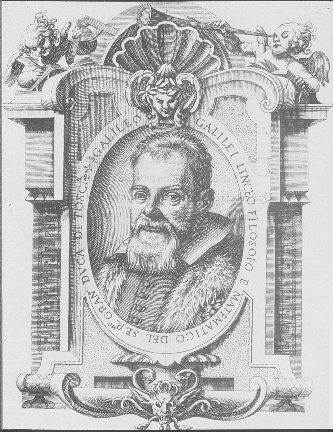
|
SLIDE 12: GALILEO (Portrait, 1613)
The erosion started with the work of Galileo.
|
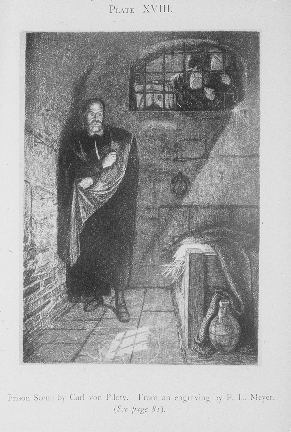
|
SLIDE 13: GALILEO (PRISON SCENE)
Most of us know Galileo as the man who was brought before
by the inquisition and imprisoned
for defending the heliocentric theory of the world.
But while all that was going on,
Galileo also managed to quietly engineer the most profound
revolution that science has ever known.
|
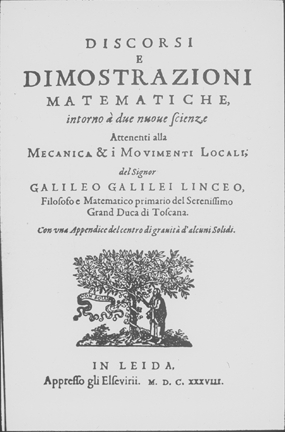
|
SLIDE 14: TITLE PAGE OF DISCORSI
This revolution,
expounded in his 1638 book "Discorsi" published in Leyden, far
from Rome, consists of two
Maxims:
|
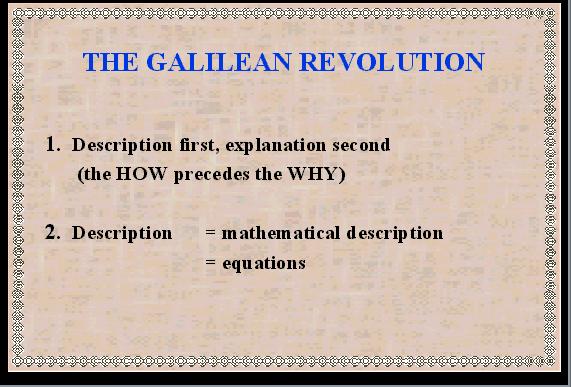
|
SLIDE 15: THE GALILEAN REVOLUTION
ONE, description first, explanation second-that is, the how precedes
the why; and
TWO, description is carried out in the language
of mathematics; namely, equations.
Ask not, said Galileo, whether an object falls
because it is pulled from below
or pushed from above.
|
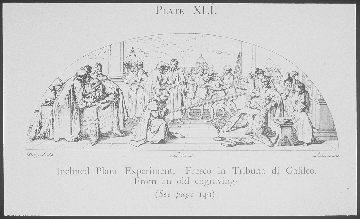
|
SLIDE 16: INCLINED PLAIN EXPERIMENT
Ask how well you can predict the time
it takes for the object to travel a certain distance,
and how that time will vary from object to object,
and as the angle of the track changes.
Moreover, said Galileo, do not attempt to answer such
questions in the qualitative and
slippery nuances of human language; say it
in the form of mathematical equations.
|
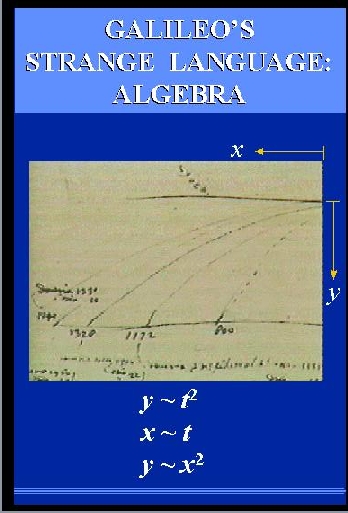
|
SLIDE 17: GALILEAN EQUATION d=t2
It is hard for us to appreciate today how strange that idea
sounded in 1638, barely 50 years after the introduction
of algebraic notation by Vieta.
To proclaim algebra the UNIVERSAL language of
science, would sound today like proclaiming Esperanto the language of economics.
Why would Nature agree to speak Algebra? of all languages?
But you can't argue with success.
The distance traveled by an object turned out
indeed to be proportional to the square of the
time.
|
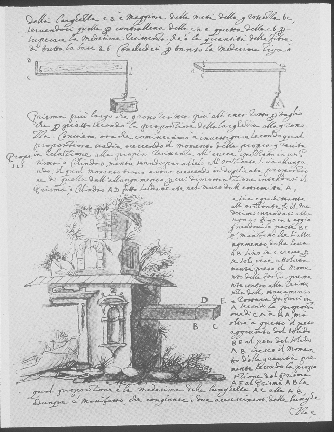
|
SLIDE 18: GALILEAN BEAMS (MANUSCRIPT, Discorsi, 1638)
Even more successful than predicting outcomes of experiments
were the computational aspects of algebraic equations.
They enabled engineers, for the first time in history,
to ask "how to" questions, in addition to "what if"
questions.
In addition to asking:
"What if we narrow the beam, will it carry the load?"
They began to ask more difficult questions:
"How to shape the beam so that it WILL carry the load?"
This was made possible by the availability
of methods for solving equations.
The algebraic machinery does not discriminate among variables;
instead of predicting behavior in terms of parameters, we can
turn things around and solve for
the parameters, in terms of the desired behavior.
Let us concentrate now
on Galileo's first maxim, "description first explanation second",
because that idea was taken very seriously
by the scientists, and changed the character of
science from speculative to empirical.
|
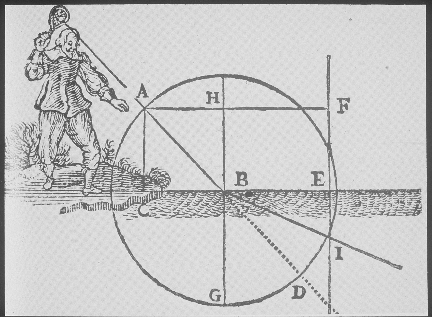
|
SLIDE 19: SNELL'S LAW (FROM DESCARTE'S DIOPTRICS, 1637)
Physics became flooded with empirical laws that were
extremely useful.
Snell law, Hookes law, Ohm's law, and Joule's law are
examples of purely empirical generalizations that were discovered and used
much before they were explained by more fundamental principles.
|

|
SLIDE 20: HOOKE'S LAW (1678)
Philosophers, however, were reluctant to give up the idea
of causal explanation, and continued to search for the origin and justification
of those successful Galilean equations.
For example, Descartes ascribed cause to ETERNAL
TRUTH.
Liebnitz made cause a SELF-EVIDENT LOGICAL LAW.
|
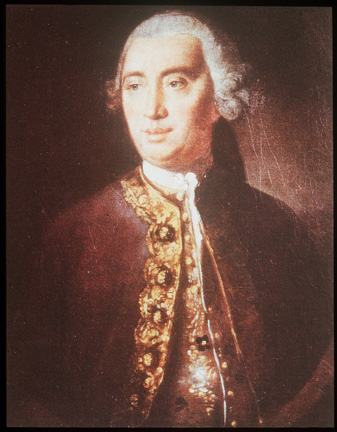
|
SLIDE 21: DAVID HUME (PORTRAIT)
Finally, about one hundred years after Galileo,
a Scottish philosopher by the name of David Hume
carried Galileo's first maxim to an extreme.
|
Continue
with Part 1b
|
